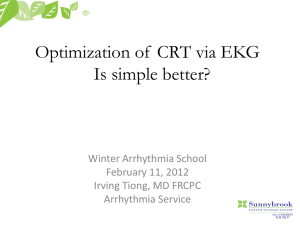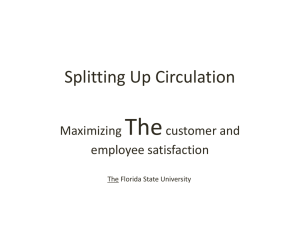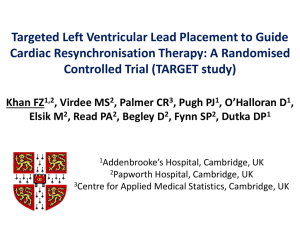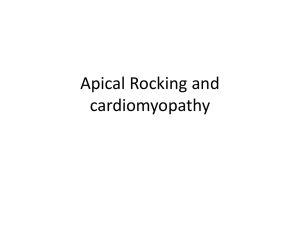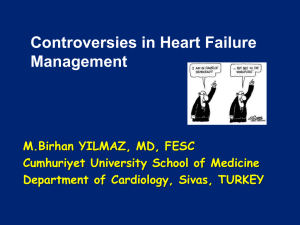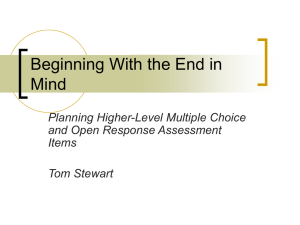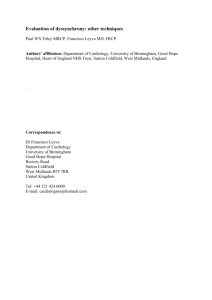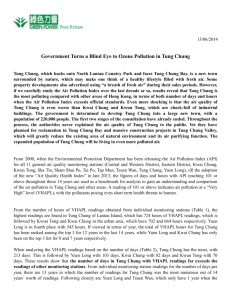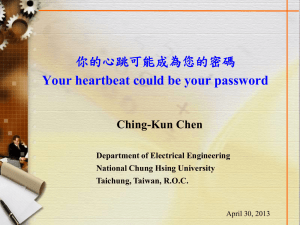Results of the PROSPECT Trial - Belgian Working Group Heart
advertisement
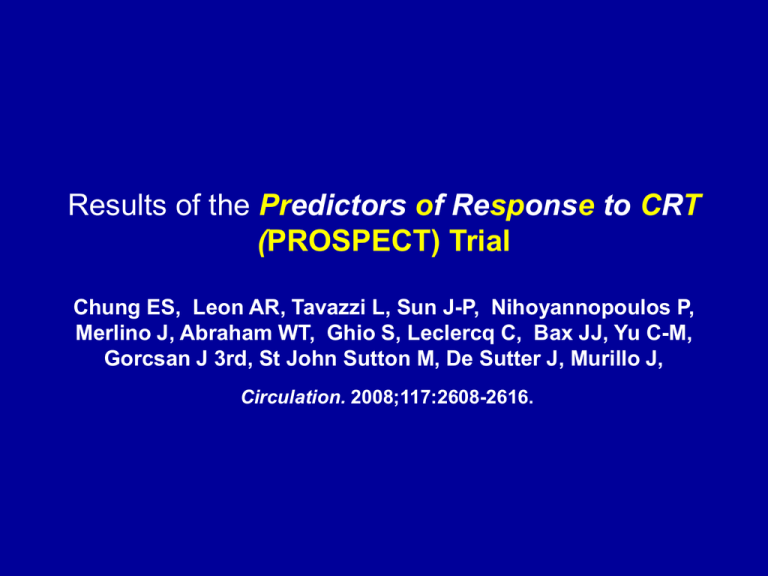
Results of the Predictors of Response to CRT (PROSPECT) Trial Chung ES, Leon AR, Tavazzi L, Sun J-P, Nihoyannopoulos P, Merlino J, Abraham WT, Ghio S, Leclercq C, Bax JJ, Yu C-M, Gorcsan J 3rd, St John Sutton M, De Sutter J, Murillo J, Circulation. 2008;117:2608-2616. Introduction – Cardiac Resynchronization Therapy (CRT) improves quality of life and functional status, reduces heart failure related hospitalizations, and prolongs survival in systolic heart failure patients with NYHA Class III or ambulatory NYHA Class IV symptoms and a wide QRS. • Strong clinical mandate for CRT in eligible patients by practice guidelines – Majority of patients treated with CRT show clinical benefit, but some considered non-responders using various measures of clinical responsiveness. – Several echocardiographic measures of mechanical dyssynchrony have identified responders pre-implant Chung, E. Circulation. 2008;117:2608-2616. PROSPECT Study Purpose: – Prospective, multi-center study designed to evaluate the ability of selected, pre-defined baseline echocardiographic parameters to predict clinical or echocardiographic response to CRT in a prospective, multi center study Primary Endpoints at 6 months: – Clinical Composite Score • • – Subjective and objective measures of clinical status include: Survival, heart failure hospitalization, change in NYHA Class and change in Patient Global Assessment Score Definition of Improved: Has not Worsened (death, HF hospitalization, worsening NYHA Class) and demonstrates improvement in NYHA Class and/or improvement in patient global assessment score Left Ventricular End-Systolic Volume • Definition of Improved: Reduction of ≥ 15% Chung, E. Circulation. 2008;117:2608-2616. 12 Predefined Echo Measures of Dyssynchrony (will report on measures with arrow) Standard Echo SPWMD Septal to posterior wall motion delay (≥ 130 ms) IVMD Interventricular mechanical delay (≥ 40 ms) LPEI LV pre-ejection interval (≥ 140 ms) LVFT/RR LV filling time as % of cardiac cycle length (R-R interval) (≤40%) LLWC Left lateral wall contraction (any overlap) Tissue Doppler Imaging Ts- (lateral-septal) Time Δ between basal lateral and septal peak (≥60 ms) Ts-SD Standard deviation of time to peak systolic velocity (≥ 32 ms) PVD Peak velocity difference (≥ 110 ms) DLC Delayed longitudinal contraction (≥ 2 segments) TD Maximum difference in time to peak displacement (median) Ts-peak Maximum Δ in time to peak systolic velocity (median) Ts-onset Maximum Δ in time to onset of systolic velocity (median) Chung, E. Circulation. 2008;117:2608-2616. Echocardiography Equipment and Core Labs Philips Core labs Equipment GE Siemens Atlanta, US London, UK Pavia, IT Atlanta, US Pavia, IT Atlanta, US London, UK Sonos 5500, 7500, or IE33. TDI: QLAB version 1.0, updated throughout to version 4.1 Echopac standalone workstation V4.0.4 or Vivid 7, version 3.2.6 Utilization by Vendor 37% GE TDI analyzed with Tomtec version 1.0, but not used in analysis Siemens 12% Aloka Philips 50% Chung, E. Circulation. 2008;117:2608-2616. Training and Quality Control Center • Each enrolling center was trained on protocol and image acquisition, and was accredited by core lab prior to patient enrollment. • Any subsequent studies judged by core lab to be of insufficient quality were censored and not included in the analysis Core Lab • Echo core labs followed internal echocardiographic measurement guidelines created and reviewed by experts and the Steering Committee. • Echo core labs were blinded to CRT response • Independent Echo Review Committee visited core labs to ensure measurement consistency and adherence to protocols prior to statistical analysis Chung, E. Circulation. 2008;117:2608-2616. Baseline Characteristics Characteristic Total Subjects (N=426) Age 68 ± 11yrs Male 71% NYHA (Class III) 96% QRS duration LVEF 163 ± 22 ms 24 ± 7 % Ischemic 54% LBBB 6 MHW 77% 274 ± 122 m Using Diuretics 83 % Using β-blocker 85 % Using ACE-i/ARB 92 % Chung, E. Circulation. 2008;117:2608-2616. Primary Endpoint Results for All Patients at 6 Months Percent of Patients 100% Clinical Composite Response N = 426 100% Change in LVESV N = 286 69% 50% 50% 56% 35% 15% 0% 16% 9% 0% Improved . UnWorsened changed % Improved Ischemic Non-Ischemic 64% 75% P = 0.01 . ≥ 15% Reduction Other ≥ 15% Increase % with ≥ 15% Reduction Ischemic Non-Ischemic 50% 63% P = 0.03 Chung, E. Circulation. 2008;117:2608-2616. Feasibility of Dyssynchrony Measures Available Measurable Images Images Method Measure Doppler TDI M-mode LPEI DLC SPWMD 407 334 407 385 271 292 % 95 81 72 TDI Ts Lat-Sep 334 223 67 TDI Ts-SD 334 167 50 Chung, E. Circulation. 2008;117:2608-2616. Primary Endpoint Results Selected Echo Measures Clinical Composite Response 72% 67% SPWMD P-value 0.44 73% 0.013 61% LPEI Ts LatSep (Bax) 67% 68% 1.00 72% 0.27 63% Ts-SD (Yu) DLC (Sogaard) 68% 66% 0% 50% % Improved LVESV 0.79 100% ■ Cut-off Met 65% 49% 61% 45% 68% P-value 0.021 0.016 45% 0.005 56% 46% 0.33 57% 54% 0.68 0% 50% 100% % with ≥ 15% Reduction ■ Cut-off Not Met Chung, E. Circulation. 2008;117:2608-2616. Inter-observer Variability London UK Philips 10 10 LPEI Pavia Italy 6 Ts-SD (Yu) 96 280 Atlanta US GE 6 SPWMD (Pitzalis) 140 64 Lab 2 (ms) Lab 2 (ms) Lab 2 (ms) 260 32 0 0 0 140 280 0 0 32 64 96 Lab 1 (ms) Lab 1 (ms) Coef. of Variation: 6.5% Kappa Coefficient: 0.67 Coef. of Variation: 33.7% Kappa Coefficient: 0.15 Chung, E. Circulation. 2008;117:2608-2616. 130 0 130 260 Lab 1 (ms) Coef. of Variation: 72.1% (not displayed) Kappa Coefficient: 0.35 Sensitivity and Specificity: Area Under the ROC Curve • Clinical Composite Response: Range from 0.50 to 0.60 • LVESV: Range from 0.51 to 0.62 ROC Curve 100.0 100.0 80.0 80.0 60.0 60.0 Sensitivity (%) Sensitivity (%) ROC Curve 40.0 20.0 0.0 0.0 40.0 20.0 20.0 40.0 60.0 80.0 1 - Specificity (%) Clinical Composite Response Ts-SD AUC = 0.60 100.0 0.0 0.0 20.0 40.0 60.0 80.0 100.0 1 - Specificity (%) LVESV SPWMD AUC = 0.62 Chung, E. Circulation. 2008;117:2608-2616. Discussion • Dyssynchrony is a complex issue, not a matter of one single measurement. Echo parameters that may be considered attractive candidates for further studies point at different components of cardiac dyssynchrony (inter-, intra-, and A-V dyssynchrony). A general assessment might be warranted. • PROSPECT data may be useful to understand how to better standardize procedures and reduce variability of echo assessment of dyssynchrony. Chung, E. Circulation. 2008;117:2608-2616. Conclusions The results of the PROSPECT study indicate that no single echocardiographic measure of dyssynchrony, as applied in this multi-center study, may be recommended to further improve patient selection among the CRT candidates. Current clinical criteria including electrocardiogram, remain the standard for CRT patient selection. Chung, E. Circulation. 2008;117:2608-2616.

